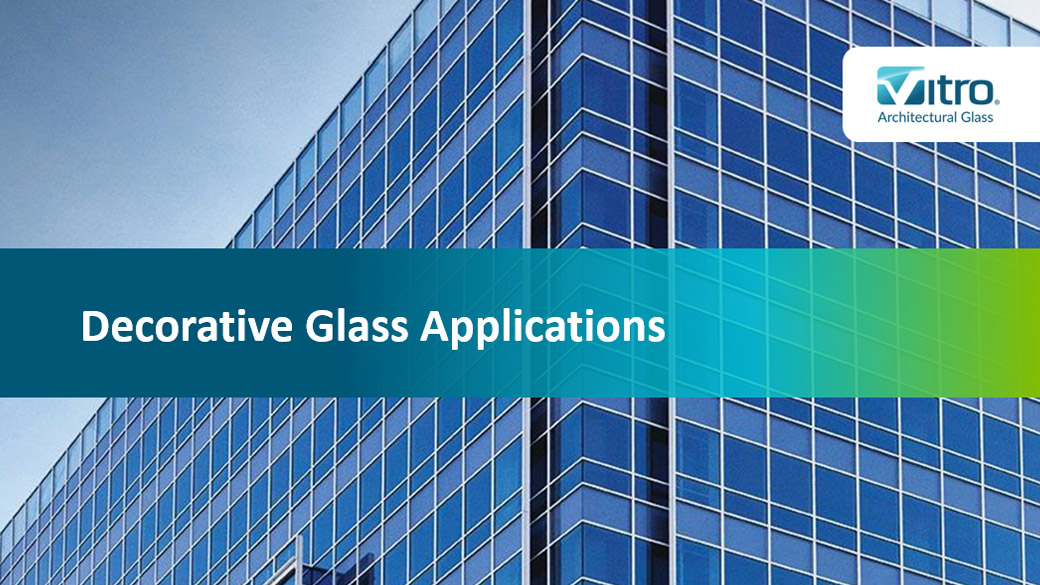In recent years, glass fabricators have made significant advances in their technologies, creating a range of decorative glass applications that are increasingly specified by architects who seek distinctive, colorful or visually interesting designs.
But what are the various decorative glass applications? And how are these patterns, colors and images actually applied or incorporated into the glass?
The primary types of decorative glass are:
- Dichroic glass
- Ceramic frit
- Digital ceramic printing
- Acid-etched and patterned glass
- Sandblasted edge glass
- Laminated glass
Dichroic Glass
Dichroic glass displays reflected color in different lighting conditions. It creates brilliant color shifts and the effect of color movement within a single lite of glass. Effects can be enhanced by using textured glass as one or more of the glass lites, or muted by using acid-etched glass. Dichroic glass may be available in both translucent and opaque options and is suitable for both interior and exterior applications.
Ceramic Frit
Ceramic frit can be applied to glass and fired into a permanent, opaque coating. Ceramic frit includes silk screening and spandrel glass. Ceramic frit helps reduce glare, heat gain and visible light, while providing exteriors with a distinctive look, with patterns ranging from simple shapes and gradients to intricate designs. Ceramic frit can be combined with any number of coatings, tints and reflective glasses in insulated/laminated applications. It can be applied via the silk-screening or spandrel glass fabrication process.
Digital Ceramic Printing
Digital ceramic printing involves digitally printing images directly on glass. This type of decorative glass functions similarly to ceramic frit. Virtually any full-color design can be reproduced on glass. Digital ceramic printing is generally used for interior applications, with print on the first (#1) or second (#2) surface of the glass lite.
Digital printing can also amplifies true color fidelity of low-iron glasses like Starphire® Glass. It can be laminated and/or printed on heavy glass. Digital ceramic printing is not appropriate for low-e coated glass.
Acid-Etched Glass
Acid-etched glass is treated with an acidic material, such as hydrofluoric acid, to produce a surface finish that diffuses transmitted light, reduces glare and has a “frosted” appearance, usually in a pattern. Bird-friendly glass is generally acid-etched glass. Interior applications include dividing walls, wall coverings, office partitions and enclosures, shower and bath enclosures, floors, stairs and railings and doors. Exterior applications include spandrels, skylights, canopies, atriums and doors.
Other Decorative Glass Applications
Other decorative glass applications include sandblasted edge glass, which roughs the edge of the glass lite and laminated glass with tinted or patterned polyvinyl butyral (PVB) interlayers, which can be spliced together to create specific colors.
To learn about Vitro Architectural Glass’s decorative glass capabilities, visit vitroglazings.com.
Updated on August 12, 2021





